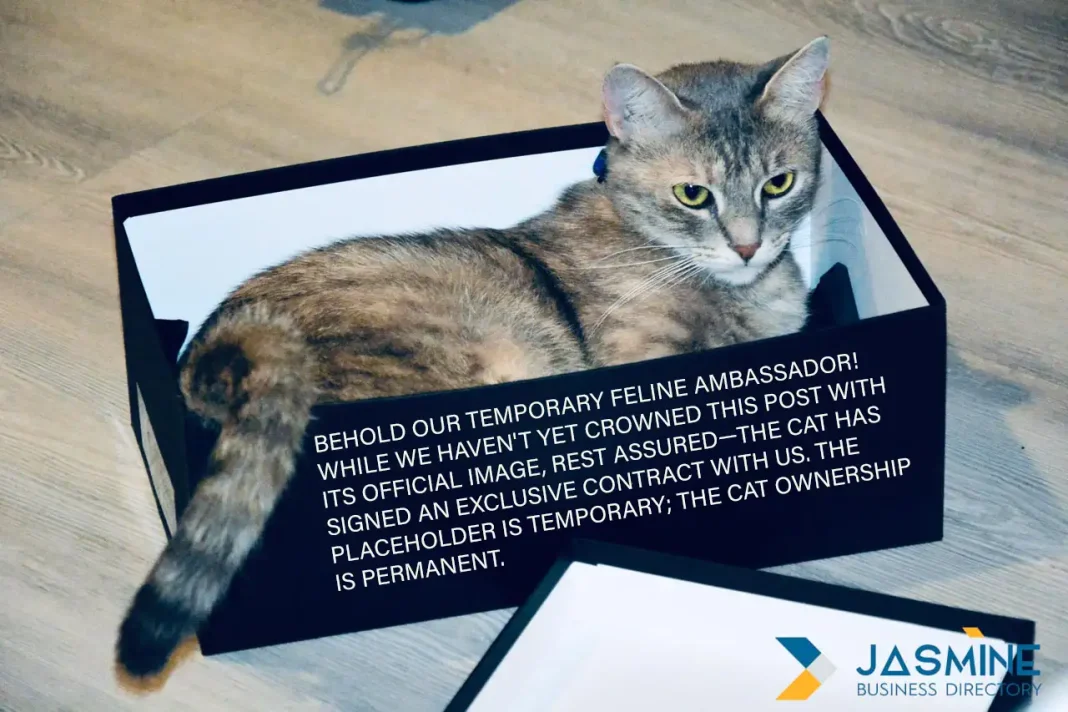Imagine assisting to a conversation between two marketers. I don’t know about you, but only conceiving this dialogue gave me a headache. Each acronym serves as a shorthand for complex marketing strategies and metrics, allowing Sarah and Mike to communicate in an efficient yet comprehensive manner. Read on…
Sarah: Hey Mike, great to virtually meet you at this summit. How’s everything on the B2B front? Still smashing those KPIs?
Mike: Hi Sarah, great to meet you too! Oh, you bet. We’re seeing fantastic ROI on our PPC campaigns, and our MAU has doubled this quarter. How about you?
Sarah: That’s amazing! We’ve also been doing well. Our SEO efforts have paid off, and we’re ranking higher on the SERP. However, we’re really focusing on CRO right now to improve our UI/UX.
Mike: Ah, the eternal quest for CRO. Are you employing A/B testing to drive those numbers?
Sarah: Of course. But we’re also analysing CLV to optimise our CRM. We’re aiming for a low CAC but high LTV, you know?
Mike: A wise strategy. We’ve been going heavy on CPM for brand awareness. We also have a real-time dashboard tracking our ROAS and EPC. Helps keep the team aligned.
Sarah: That sounds comprehensive. Are you using GA for that?
Mike: We started with GA but have moved to a more bespoke platform that also covers DRM and API integration. It offers better GEO targeting for our PPC campaigns.
Sarah: Clever move. We’ve been dabbling in SMM lately, leveraging UGC to enhance our SOV. Anything new on your end?
Mike: Ah, UGC is gold. We’ve recently incorporated QR codes into our O2O strategy. Plus, we’re exploring partnerships to expand our reach among SMEs.
Sarah: QR codes for O2O? That’s intriguing! Have you considered the RFM model to identify potential high-value customers within those SMEs?
Mike: Brilliant idea, Sarah. RFM could work wonders when combined with our current RTB system for programmatic ad buys.
Sarah: I thought you’d like it. By the way, have you measured your NPS recently? We found a strong correlation between high NPS scores and low BR.
Mike: Ah, the ever-important NPS. We monitor it monthly and use the insights for quality control, or QC as they say. Helps us adjust our PR strategies too.
Sarah: Excellent! It’s all interconnected, isn’t it? The acronyms make the marketing world go round!
Mike: Absolutely, Sarah. They may seem like just letters, but they’re the building blocks of any robust marketing strategy.
So, let’s see what all there marketing acronyms mean?
PPC: Pay-Per-Click
Let’s start with PPC, which stands for Pay-Per-Click. This is a digital advertising model wherein advertisers pay a fee each time one of their ads is clicked. PPC is an integral part of search engine marketing, enabling advertisers to bid for ad placements in sponsored links. It’s akin to buying visits to your site rather than earning them organically. The magic potion here is relevance; your ads appear only when they’re pertinent to the user’s query, thus making PPC incredibly targeted.
ROI: Return on Investment
ROI, or Return on Investment, is the Holy Grail of marketing metrics. It measures the profitability of an investment in relation to its cost. Essentially, it helps you understand if the juice is worth the squeeze. ROI is calculated by dividing the net profit from the investment by its initial cost, often multiplied by 100 to get a percentage. But do remember, a high ROI doesn’t just magically appear; it’s the result of meticulous planning, strategy, and execution.
CPM: Cost Per Mille
CPM (Cost Per Mille, or Cost Per Thousand Impressions) is a common metric used to gauge the cost of 1,000 ad impressions on a webpage. Unlike PPC, where you pay per click, CPM is all about visibility. The more eyeballs you get, the higher the cost. This is particularly useful for brand awareness campaigns where the goal is exposure rather than immediate conversion.
CLV: Customer Lifetime Value
This metric takes a long view, focusing on the total value a customer brings to a business over the entire lifetime of their relationship. CLV is crucial for understanding customer retention and loyalty, guiding strategies that range from customer service to personalised marketing offers. It’s the compass by which many a savvy marketer navigates.
A/B Testing
Although not an acronym, A/B Testing is a shorthand that has gained considerable traction in marketing circles. Here, two versions of an element (A and B) are compared against each other to determine which performs better in terms of a given metric. Think of it as an evolutionary process where only the fittest (or most effective) survive (Chris Goward, “You Should Test That: Conversion Optimization for More Leads, Sales and Profit or The Art and Science of Optimized Marketing”, 2013, Sybex, Indianapolis, IN).
Anyway, here’s more:
- SEO: Search Engine Optimisation – The practice of optimising a website or digital content to improve its visibility in search engine results.
- SEM: Search Engine Marketing – A broader term that includes SEO but also encompasses paid search activities, such as PPC campaigns.
- SMM: Social Media Marketing – Refers to marketing efforts carried out on social media platforms.
- CTA: Call to Action – A prompt encouraging users to take a specific action, such as clicking a link or making a purchase.
- CRM: Customer Relationship Management – A strategy or software used for managing a company’s interactions with its customers.
- UGC: User-Generated Content – Content created and published by unpaid contributors, often fans or followers.
- CTR: Click-Through Rate – The ratio of users who click on a link compared to the number who view it.
- CRO: Conversion Rate Optimisation – The practice of increasing the percentage of website visitors who take a desired action.
- CMS: Content Management System – Software that helps users create, manage, and modify content on a website.
- CPL: Cost Per Lead – The cost an advertiser pays for each generated lead.
- CPA: Cost Per Action – A payment model where advertisers pay for a specific action, such as a sale or form submission, to be completed.
- LTV: Lifetime Value – The total net profit attributed to the entire future relationship with a customer.
- SERP: Search Engine Results Page – The page displayed by search engines in response to a query.
- GA: Google Analytics – A popular tool used to track website activity.
- PR: Public Relations – The practice of managing communication between a brand and the public.
- BR: Bounce Rate – The percentage of website visitors who navigate away from the site after viewing only one page.
- ToFu, MoFu, BoFu: Top of Funnel, Middle of Funnel, Bottom of Funnel – Refers to different stages in the buying cycle.
- SWOT: Strengths, Weaknesses, Opportunities, Threats – A strategic planning tool used to evaluate these four aspects of a project or business venture.
- MAU: Monthly Active Users – A metric for the number of unique users who engage with a product within a 30-day period.
- CAC: Customer Acquisition Cost – The cost associated with convincing a potential customer to buy a product or service.
- DRM: Digital Rights Management – Technology that protects copyrighted digital material from unauthorized distribution.
- API: Application Programming Interface – A set of rules and protocols for building and interacting with software applications.
- DM: Direct Mail or Direct Message – Refers to the sending of promotional materials or messages directly to the consumer.
- RSS: Really Simple Syndication – A type of web feed allowing users and applications to receive regular updates.
- SOV: Share of Voice – The percentage of conversations or mentions a brand has compared to competitors within the same digital space.
- ESP: Email Service Provider – Companies that offer email marketing or bulk email services.
- HTML: HyperText Markup Language – Standard markup language for documents designed to be displayed in a web browser.
- IP: Internet Protocol – An address that identifies a device on the Internet.
- VOD: Video On Demand – Systems that allow users to watch video content when they choose to, rather than at a scheduled broadcast time.
- GEO: Geographical Targeting – Serving ads to users based on their geographical location.
- QC: Quality Control – The process of ensuring a final product meets certain standards and specifications.
- EPC: Earnings Per Click – A performance metric that measures the effectiveness of a marketing campaign based on clicks.
- SaaS: Software as a Service – Software that is hosted on the cloud and accessed via the Internet.
- PPL: Pay Per Lead – A marketing metric that describes the cost incurred in acquiring a new lead.
- DA: Domain Authority – A metric that predicts how well a website will rank on search engines.
- UI/UX: User Interface/User Experience – Refers to the design and interactive elements that create a user’s experience on a website or application.
- KPI: Key Performance Indicator – Metrics that evaluate the success of an organisation or of a specific activity in which it engages.
- ROAS: Return On Advertising Spend – Measures the gross revenue generated for every pound spent on advertising.
- O2O: Online to Offline – A term for drawing online customers to physical stores.
- QR Code: Quick Response Code – A two-dimensional barcode that can be read using smartphones and dedicated QR reading devices.
- SME: Subject Matter Expert or Small and Medium-sized Enterprises – Can refer to an expert in a particular field or a small to medium-sized business.
- FTP: File Transfer Protocol – A standard protocol used for transferring computer files between a client and server on a computer network.
- RFP: Request For Proposal – An invitation for suppliers to submit a proposal for a specific project or service.
- SMO: Social Media Optimisation – The use of social media networks to grow an organisation’s online presence.
- NPS: Net Promoter Score – Measures customer experience and predicts business growth.
- RFM: Recency, Frequency, Monetary Value – A marketing analysis tool used to identify an organisation’s best clients.
- RTB: Real-Time Bidding – An auction setting where advertising inventory is bought and sold on a per-impression basis, via programmatic real-time auctions.
- B2B/B2C: Business-to-Business/Business-to-Consumer – Describes the type of commerce transaction that is taking place.
- IoT: Internet of Things – Refers to the interconnected nature of devices and systems that communicate with each other over the Internet.
- OMG: Omni-Channel Marketing – A multichannel approach to sales that seeks to provide customers with a seamless experience, whether they are shopping online or in a physical store.

